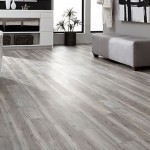Flooring Options Over Asbestos Tile: A Comprehensive Guide
Asbestos floor tiles, once a common and affordable flooring choice, pose a health risk when disturbed. Due to the potential for asbestos fiber release, complete removal of existing asbestos tile can be costly and require specialized procedures. Consequently, many homeowners and building managers choose to install new flooring directly over the existing asbestos tile. This approach, known as encapsulation, creates a barrier that prevents the release of asbestos fibers and provides a safer and often more economical solution. However, careful consideration of various flooring options is crucial to ensure a durable, safe, and aesthetically pleasing result.
The suitability of a specific flooring type over asbestos tile depends on several factors. These include the condition of the existing tile, the desired aesthetic of the new floor, budget limitations, and expected foot traffic. Preparing the existing asbestos tile surface is paramount, regardless of the chosen flooring. This preparation typically involves cleaning, leveling, and potentially applying a sealant or underlayment to create a stable and even base. Selecting the appropriate adhesive or installation method is also critical to prevent future issues and ensure the long-term integrity of the new flooring.
Understanding the Risks of Disturbing Asbestos
Asbestos, a naturally occurring mineral, was widely used in building materials due to its fire-resistant and insulating properties. However, it was later discovered that inhaling asbestos fibers can lead to serious health problems, including asbestosis (a chronic lung disease), lung cancer, and mesothelioma (a rare and aggressive cancer that affects the lining of the lungs, abdomen, or heart). Floor tiles, particularly those manufactured before the 1980s, often contain asbestos. When these tiles are sawed, sanded, or otherwise disturbed, asbestos fibers can become airborne and pose a significant health risk. This is why professional asbestos abatement is usually required for removal.
The health risks associated with asbestos exposure are cumulative, meaning that the more exposure a person has, the greater their risk of developing asbestos-related diseases. Symptoms of these diseases can take decades to appear, making early detection challenging. Therefore, minimizing asbestos exposure is crucial for protecting public health. Encapsulating asbestos tile by installing new flooring over it is a common and effective method of preventing fiber release and reducing the risk of exposure.
It's important to note that undisturbed asbestos tile generally poses a low risk. The danger arises when the tiles are damaged or disturbed, releasing fibers into the air. Regularly inspecting existing asbestos tile for signs of damage, such as cracks, chips, or loose tiles, is essential. Damaged tiles should be addressed promptly by either repairing them with appropriate sealant or considering encapsulation.
Popular Flooring Options for Encapsulation
Several flooring options are suitable for installation over existing asbestos tile, each with its own advantages and disadvantages. The ideal choice will depend on the specific needs and preferences of the homeowner or building manager.
1. Luxury Vinyl Tile (LVT) and Luxury Vinyl Plank (LVP): LVT and LVP are popular choices due to their durability, water resistance, and ease of installation. These materials are available in a wide range of styles and colors, mimicking the look of wood, stone, and tile. LVT and LVP typically feature a click-lock system, allowing for a floating installation that doesn't require direct adhesion to the asbestos tile. This can be advantageous as it minimizes the risk of disturbing the existing tile. However, ensure the subfloor (the encapsulated asbestos tile) is level and smooth. Minor imperfections can telegraph through the vinyl, affecting the appearance and lifespan of the floor.
The thickness of LVT/LVP is also a consideration. Thicker planks generally offer better sound insulation and are more forgiving of minor imperfections in the subfloor. Prior to installing LVT/LVP, a leveling compound may be necessary to ensure a perfectly smooth surface. An underlayment can also be added to provide additional cushioning and sound absorption.
2. Engineered Hardwood: Engineered hardwood consists of a thin layer of real hardwood veneer bonded to a core of plywood or high-density fiberboard (HDF). This construction provides greater stability than solid hardwood, making it less susceptible to warping or cupping in humid environments. Engineered hardwood can be installed over asbestos tile using a floating installation method or by gluing it down. A floating installation is generally preferred as it minimizes the risk of disturbing the asbestos tile. When gluing, use a low-VOC adhesive specifically designed for use over existing flooring. Ensure the adhesive is compatible with both the engineered hardwood and the encapsulated asbestos tile.
Proper preparation of the asbestos tile surface is crucial for a successful engineered hardwood installation. The surface must be clean, level, and free of any loose debris. A self-leveling compound can be used to correct any imperfections in the subfloor. An underlayment is generally recommended to provide cushioning, sound insulation, and moisture protection.
3. Sheet Vinyl: Sheet vinyl offers a cost-effective and durable flooring solution. It is available in a wide range of colors and patterns, including realistic wood and tile designs. Sheet vinyl is relatively easy to install, especially for smaller areas. It typically requires gluing down to the subfloor, which can be a concern when dealing with asbestos tile. However, by using a low-VOC adhesive and carefully following the manufacturer's instructions, the risk of disturbing the asbestos tile can be minimized. Ensure the existing asbestos tile is completely smooth and free of any cracks or chips before installing sheet vinyl. Any imperfections will be visible through the vinyl.
Prior to installation, the asbestos tile should be thoroughly cleaned and primed with a product specifically designed for use with vinyl flooring. This will help the adhesive bond properly and prevent any future issues. Sheet vinyl is a good option for bathrooms and kitchens due to its water resistance, but it is important to properly seal the seams to prevent water from seeping underneath the flooring.
4. Tile (Ceramic, Porcelain, or Stone): While technically possible, installing new tile directly over asbestos tile is generally not recommended. The added weight of the new tile can potentially put stress on the existing asbestos tile and cause it to crack or crumble, increasing the risk of asbestos fiber release. Furthermore, the installation process typically involves using thin-set mortar, which can be difficult to apply evenly over an uneven surface like existing tile. If tile is desired, a thick layer of self-leveling compound must be applied over the existing asbestos tile to create a perfectly smooth and stable base. This adds significant cost and complexity to the project.
If proceeding with tile, select thinner, lighter tiles to minimize the added weight. Use a flexible thin-set mortar specifically designed for use over existing flooring. Grout the tiles carefully to prevent water from seeping underneath. Regular maintenance and resealing of the grout are essential to prevent water damage and prolong the life of the floor.
5. Carpeting: Carpeting can be installed over asbestos tile, but certain precautions are necessary. Avoid using tack strips that require nailing into the existing floor, as this will disturb the asbestos tile. Instead, opt for a fully glued-down installation using a low-VOC adhesive. Choose a carpet pad with a high density to provide cushioning and prevent the carpet from shifting. Ensure the asbestos tile surface is clean and level before installing the carpet. Carpeting is less water-resistant than other flooring options, so it is not ideal for bathrooms or kitchens.
Key Considerations Before Installation
Prior to installing any new flooring over asbestos tile, several key considerations should be addressed to ensure a successful and safe outcome.
1. Professional Testing and Assessment: It is highly recommended to have a professional asbestos inspection and testing performed to confirm the presence of asbestos and assess the condition of the existing tile. This will provide valuable information for making informed decisions about the best course of action. A qualified asbestos inspector can also advise on the proper safety precautions to take during the installation process.
2. Surface Preparation: Proper surface preparation is crucial for the longevity and performance of the new flooring. The existing asbestos tile must be thoroughly cleaned to remove any dirt, dust, grease, or debris. Any loose or damaged tiles should be repaired or replaced before proceeding. A self-leveling compound may be necessary to create a smooth and even surface. The prepared surface should be primed with a product specifically designed for use with the chosen flooring material.
3. Adhesive Selection and Application: Choosing the right adhesive is critical for a successful installation. Use a low-VOC adhesive specifically designed for use over existing flooring and compatible with both the asbestos tile and the new flooring material. Follow the manufacturer's instructions carefully when applying the adhesive. Ensure the adhesive is evenly distributed and allowed to cure properly before walking on the new floor.
4. Ventilation and Personal Protective Equipment (PPE): During the installation process, it is essential to ensure adequate ventilation to minimize the risk of inhaling any asbestos fibers. Open windows and doors or use a fan to circulate air. Wear appropriate PPE, including a respirator, gloves, and eye protection. Dispose of any waste materials properly in sealed containers labeled as containing asbestos.
5. Local Regulations and Guidelines: Familiarize yourself with local regulations and guidelines regarding asbestos abatement and encapsulation. In some jurisdictions, permits may be required for any work involving asbestos-containing materials. Failure to comply with these regulations can result in fines or other penalties.
By carefully considering these factors and selecting the appropriate flooring option, homeowners and building managers can safely and effectively encapsulate asbestos tile, creating a beautiful and durable floor while minimizing the risk of asbestos exposure.

Can I Put A New Floor Over Asbestos Tiles Branch Environmental

How To Waterproof A Basement

Basement Flooring Over Asbestos Tiles Ideas

How To Install Hardwood Flooring Over Asbestos Tiles 123

Installing Hardwood Over Asbestos Tiles Homeadvisor

Asbestos Floor Tiles 101 What To Know About This Old Home Hazard Bob Vila

How Do I Paint Asbestos Flooring Perfectprimer

Perfectprimer Seal Asbestos Mastics Tile And Cut Back Glue Directly

Why Remove Vinyl Asbestos Tile Encapsulate Safer And Er Duraamen

Is It Epa Acceptable To Cover Asbestos Tiles With Hometalk
Related Posts








